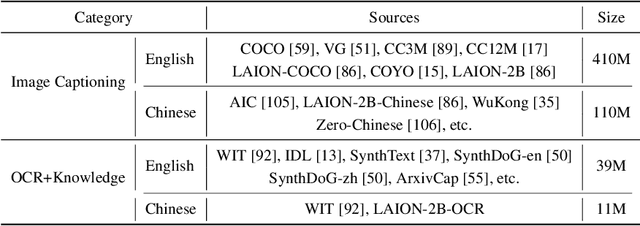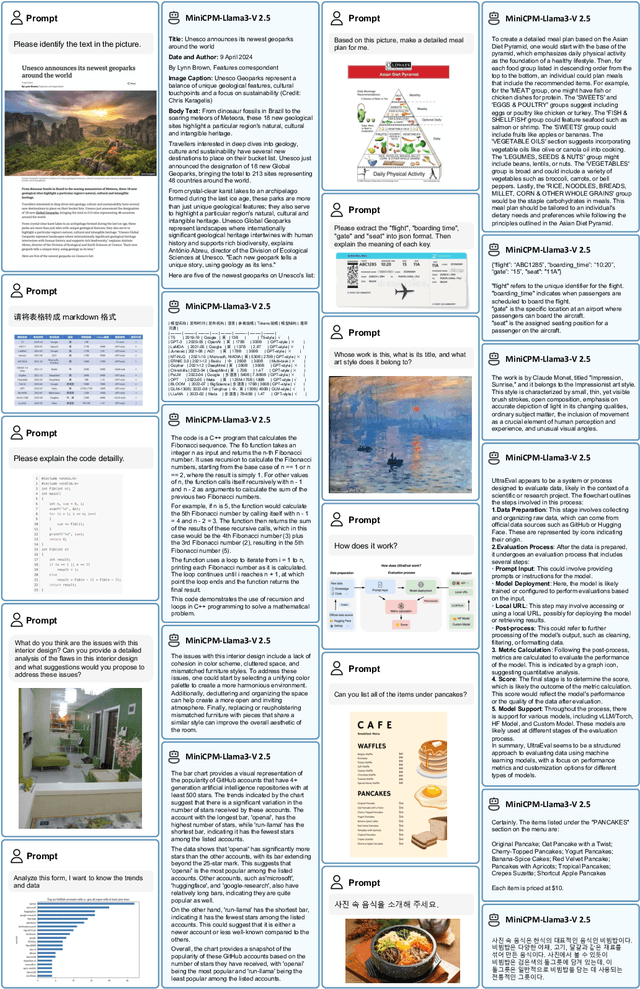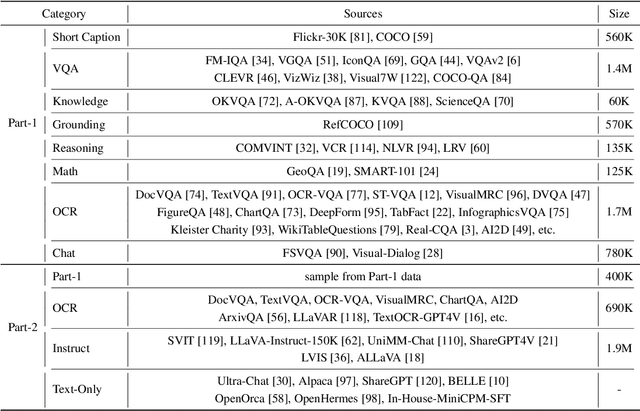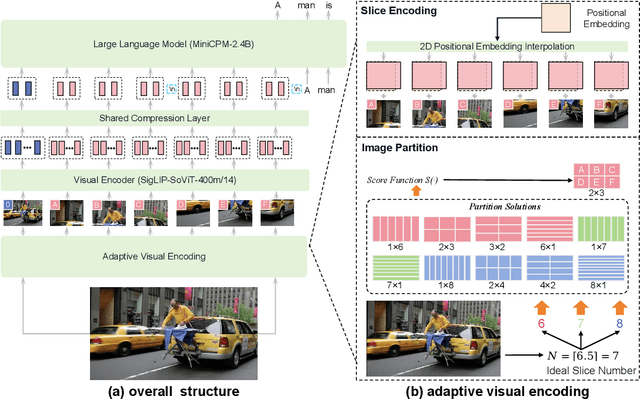Hongji Zhu
MiniCPM-V: A GPT-4V Level MLLM on Your Phone
Aug 03, 2024



Abstract:The recent surge of Multimodal Large Language Models (MLLMs) has fundamentally reshaped the landscape of AI research and industry, shedding light on a promising path toward the next AI milestone. However, significant challenges remain preventing MLLMs from being practical in real-world applications. The most notable challenge comes from the huge cost of running an MLLM with a massive number of parameters and extensive computation. As a result, most MLLMs need to be deployed on high-performing cloud servers, which greatly limits their application scopes such as mobile, offline, energy-sensitive, and privacy-protective scenarios. In this work, we present MiniCPM-V, a series of efficient MLLMs deployable on end-side devices. By integrating the latest MLLM techniques in architecture, pretraining and alignment, the latest MiniCPM-Llama3-V 2.5 has several notable features: (1) Strong performance, outperforming GPT-4V-1106, Gemini Pro and Claude 3 on OpenCompass, a comprehensive evaluation over 11 popular benchmarks, (2) strong OCR capability and 1.8M pixel high-resolution image perception at any aspect ratio, (3) trustworthy behavior with low hallucination rates, (4) multilingual support for 30+ languages, and (5) efficient deployment on mobile phones. More importantly, MiniCPM-V can be viewed as a representative example of a promising trend: The model sizes for achieving usable (e.g., GPT-4V) level performance are rapidly decreasing, along with the fast growth of end-side computation capacity. This jointly shows that GPT-4V level MLLMs deployed on end devices are becoming increasingly possible, unlocking a wider spectrum of real-world AI applications in the near future.
Discovering Sounding Objects by Audio Queries for Audio Visual Segmentation
Sep 18, 2023



Abstract:Audio visual segmentation (AVS) aims to segment the sounding objects for each frame of a given video. To distinguish the sounding objects from silent ones, both audio-visual semantic correspondence and temporal interaction are required. The previous method applies multi-frame cross-modal attention to conduct pixel-level interactions between audio features and visual features of multiple frames simultaneously, which is both redundant and implicit. In this paper, we propose an Audio-Queried Transformer architecture, AQFormer, where we define a set of object queries conditioned on audio information and associate each of them to particular sounding objects. Explicit object-level semantic correspondence between audio and visual modalities is established by gathering object information from visual features with predefined audio queries. Besides, an Audio-Bridged Temporal Interaction module is proposed to exchange sounding object-relevant information among multiple frames with the bridge of audio features. Extensive experiments are conducted on two AVS benchmarks to show that our method achieves state-of-the-art performances, especially 7.1% M_J and 7.6% M_F gains on the MS3 setting.
 Add to Chrome
Add to Chrome Add to Firefox
Add to Firefox Add to Edge
Add to Edge